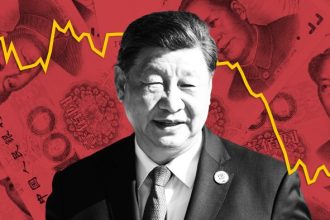Receive free War in Ukraine updates
We’ll send you a myFT Daily Digest email rounding up the latest War in Ukraine news every morning.
“Holding Nato together is really critical,” says Joe Biden. But the unity of Nato’s 31 members will be put to its biggest test since the beginning of the Ukraine war, at the organisation’s summit in Lithuania this week.
The issue that threatens to divide the alliance is Ukraine’s ambition to join it. One camp, including Poland, the Baltic states and Ukraine itself, wants to see the country put on a fast track to Nato membership. Another, led by the US and supported by Germany, wants to slow the process down and to promote other forms of security guarantee for Ukraine.
Skilful diplomats will probably find a form of words that will paper over these cracks. The final Nato communiqué is likely to assert that Ukraine will join the alliance in the future but avoid any pledge to fast-track the process.
That, however, will not be the end of the matter. Lying behind this argument are fundamental differences about how to end the Ukraine war and how to guarantee the peace once it does end.
The hardline camp believes that the goal should be complete victory for Ukraine and humiliating defeat for Russia. They think that the only way to secure peace is to break Russian power and then to bring Ukraine into Nato. They believe that Kyiv has already paid a heavy price for excessive US and German caution in the delivery of weapons — and that the Americans are now repeating this mistake by dragging their feet over future Ukrainian membership of the alliance.
The American and German governments are more cautious about both war aims and securing the peace. One senior German diplomat muses that behind Poland’s talk of the need for a total defeat of Vladimir Putin is the hope that Russia might eventually break apart. That, he says, is an idea that Berlin has no interest in.
The Americans are not saying that Ukraine can never join Nato. But they are gently applying the brakes by insisting that every technical requirement must be fulfilled first. When the indignant hardliners cite the recent fast-tracking of Finland into the alliance as a precedent, the US response is that Finland, as an EU member, already fulfilled all the requirements on anti-corruption measures, democratic governance and the like.
Behind the formal American objections lies a concern that any commitment to fast-track Ukraine into Nato could prolong the war, and introduce dangerous complications into a future peace settlement. For example, would Crimea be covered by a Nato security guarantee for Ukraine? Some US officials also worry that some allies would actually like to see Nato drawn directly into the war with Russia. “If they want that, they should say so openly,” says one well-placed Washingtonian, “because that’s not our policy.”
Rather than push for Nato now, the US is emphasising alternative forms of security guarantee. The idea would be to establish a unique military partnership with Ukraine involving the transfer of high-tech weaponry and intense military-to-military co-operation. The plan, says one US official, is to create a “defence-oriented force that would present too hard a target for any future Russian aggression”. Biden and others have likened this to the US relationship with Israel. Like the Israelis, the Ukrainians would be a close American ally, furnished with the most advanced military equipment — including, controversially, cluster munitions. But crucially, like Israel, Ukraine would not, initially, be covered by Nato’s Article V security guarantee.
All this talk of alternative security guarantees worries some of Ukraine’s most ardent supporters in Nato. Last week, Kaja Kallas, the Estonian prime minister, put her frustration on the record when she told the FT: “We need practical, concrete steps on the path to Nato membership. I have the feeling that talking about security guarantees actually blurs the picture . . . the only security guarantee that really works . . . is Nato membership.”
It is easy to sympathise with Kallas’s view that ambiguity is dangerous and that “grey zones are sources of conflict and war”. Ukraine would certainly be safer inside Nato and experience suggests that Russia would be unlikely to attack a country covered by Article V.
But the reality is the American view will have to prevail. The US accounts for roughly 70 per cent of the total defence spending of all Nato countries. So Nato policy will ultimately be decided in Washington, not Brussels or Vilnius.
There are also good political, as well as financial, reasons for Nato to be guided by America’s relative caution. The Biden White House is likely to be the most Ukraine- and Nato-friendly administration that the US can currently produce. The Republicans are the party of Donald Trump, not of the late John McCain. Any move to fast-track Ukraine into Nato could easily become an issue in the US presidential election. Senate ratification of Ukrainian membership would not be guaranteed.
Behind these political facts lies a broader historical reality. Nato came into being in 1949 in the aftermath of the second world war and at the onset of the cold war. The American statesmen who created the alliance had an intellectual and emotional commitment to the defence of Europe that can no longer be taken for granted in Washington. For all their frustrations with the Biden administration, hawkish Europeans should remember that.
Read the full article here





